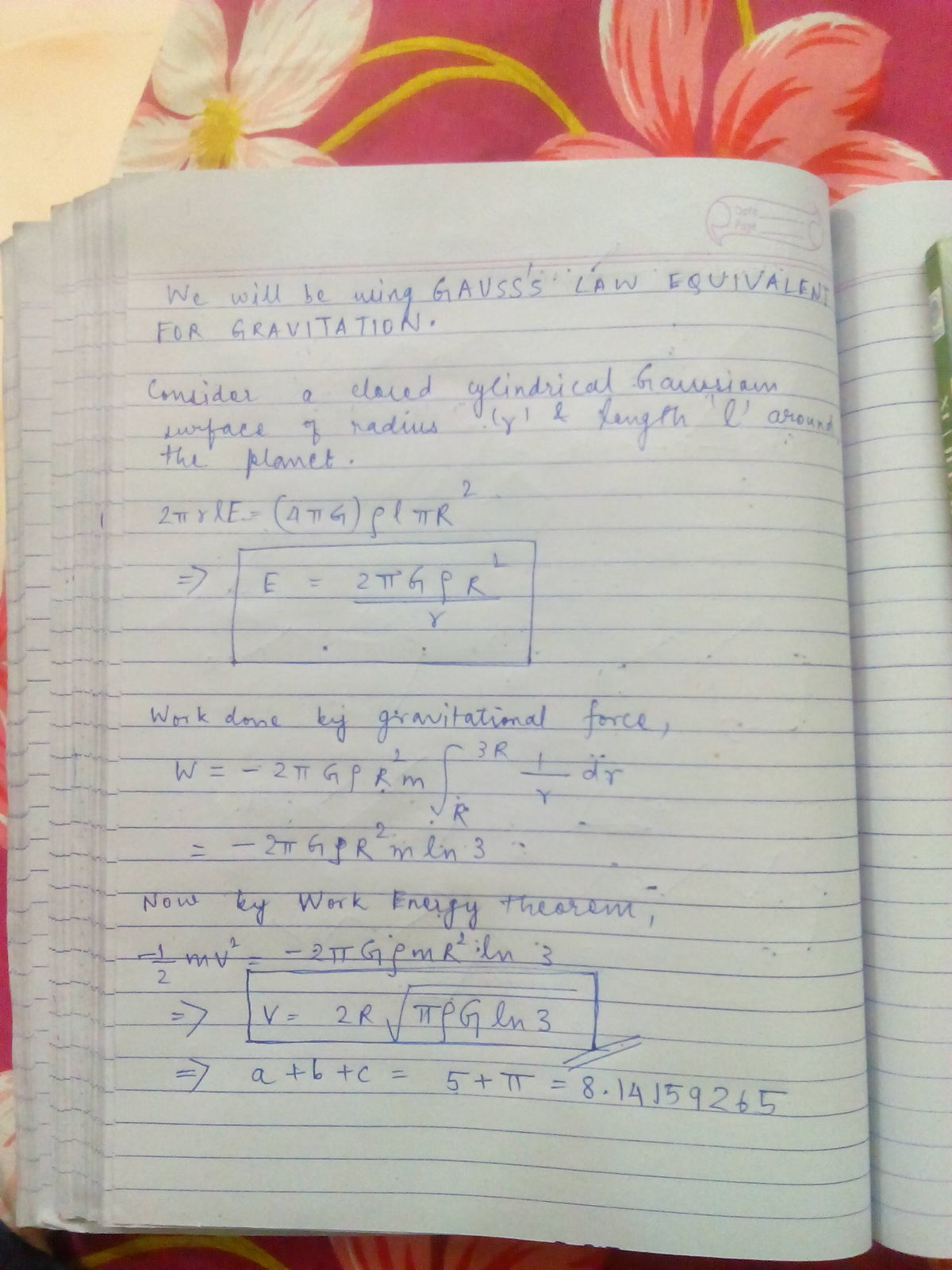Getting back to the old things #4
Consider a hypothetical planet which is a very long solid cylinder of radius R and has uniform density ρ . There is no atmosphere above the surface of the planet.
Now, somewhere from its curved surface, a small object is projected radially outward such that it reaches up to a maximum distance of 3 R from the axis.
If the speed of projection can be represented as a R π ρ G ln b , where a and b are positive integers and G is the universal gravitational constant, then find a + b .
The answer is 5.
This section requires Javascript.
You are seeing this because something didn't load right. We suggest you, (a) try
refreshing the page, (b) enabling javascript if it is disabled on your browser and,
finally, (c)
loading the
non-javascript version of this page
. We're sorry about the hassle.
2 solutions
Great solution!!!!
I solved by 1st finding the gravitational field and then integrated in the length of the cylinder, and hence we got
∫ − ∞ + ∞ x 2 + y 2 d y where x is distance of the pt. for which we are find the gravitational field , and hence, Done the question
i did using integration , considering discs of length dx and then integrate cos component of F twice, it was pretty hi-fi , :P
Log in to reply
Ya.... I had thought about that but gauss I felt was a bit more elegant.
Log in to reply
mine is elegant , ur is EASY .
Log in to reply
@A Former Brilliant Member – Yes ....OK if you have time do post your solution and best of luck for ADV.
Log in to reply
@A Former Brilliant Member – thnx , i'd recommend u to try my method , hope advanced 'll go best :)
Log in to reply
@A Former Brilliant Member – Yes sure I will try

Since the mass density is uniform over the whole cylindrical planet and the length of this cylinder is very large, so the gravitational field lines will be cylindrically-radially outward w.r.t. the axis of the cylinder and the gravitational field will be same at all points at a distance r from the axis of the cylinder.
Taking an element of length ℓ of this cylinder and using the Gauss's law for gravitation, we have
⟹ ⟹ ⟹ ∮ E ⋅ d S = 4 π G M E ∮ d S = 4 π G ( ρ π R 2 ℓ ) E ( 2 π r ℓ ) = 4 π G ( ρ π R 2 ℓ ) E = r 2 ρ π G R 2
Let the mass of the particle projected be m . By work energy theorem, we have
⟹ ⟹ ⟹ ⟹ W force of gravity = ∫ r 1 r 2 F ⋅ d r = Δ K − ∫ r 1 r 2 m E ⋅ d r = 0 − 2 m v 2 2 ρ π G R 2 m ∫ R 3 R r 1 d r = 2 m v 2 4 ρ π G R 2 ln ( 3 ) = v 2 v = 2 R π ρ G ln ( 3 )
Thus a + b = 2 + 3 = 5 .